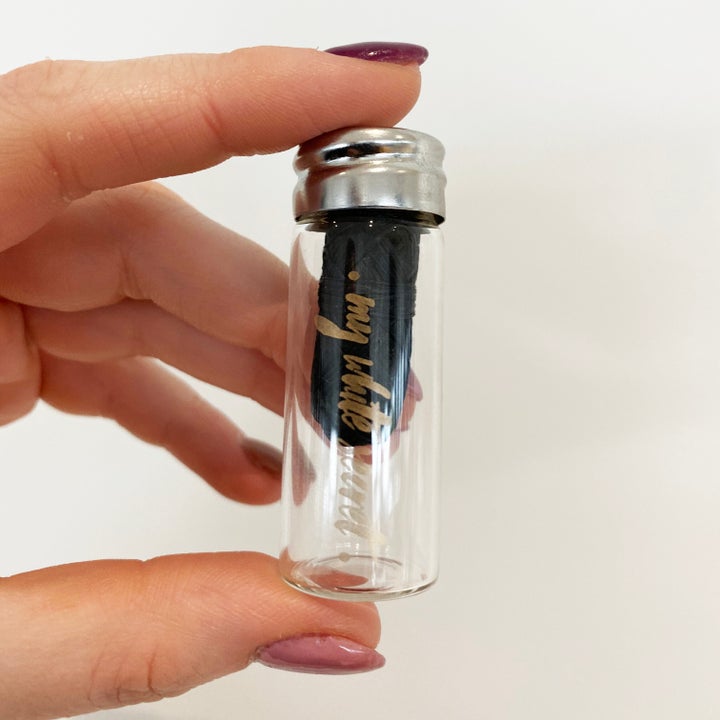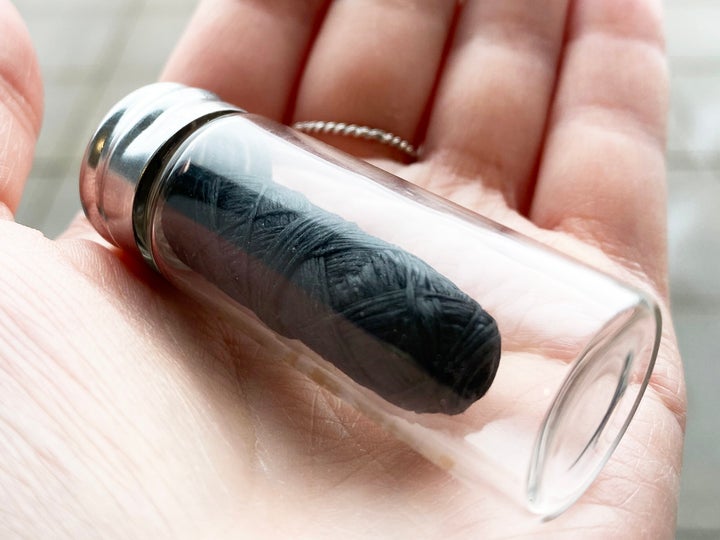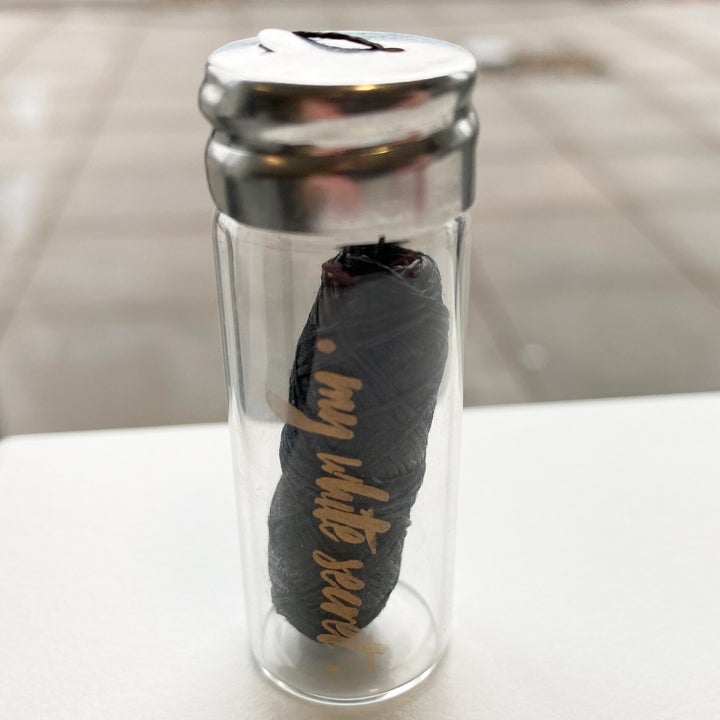
Our readers care about the environment, but making sustainable choices isn’t always as straightforward as we’d like. Swap Shop is our regular series hoping to tackle that, each week a HuffPoster will take on a new green challenge and write about their journey to live a more eco-friendly lifestyle.
As I pull a strand of black tooth floss from the glass bottle, I’m struck by how much this handy hygiene essential looks like something I’ve made at home.
The floss is rolled up like a bit of thread and stored in a small glass vial with a metal lid. The only giveaway that it’s tooth floss is a little slot in the lid where you pull the floss through and cut a length of it off. And even that isn’t immediately obvious.
This isn’t just any old tooth floss. This is plastic-free, charcoal floss made from bamboo trees. Aside from the slightly eye-watering price of £5.49 (yes, really) I am very excited about the prospect of ditching my single-use plastic floss habit once and for all.

I’ve started taking flossing more seriously this year, urged, in part, by my dentist – but with greater awareness about single-use plastic, I’ve realised how few sustainable options there are.
I’ve used single-use floss picks (the ones with plastic handles), interdental brushes and your bog standard floss in a little plastic tub. When I think about the amount of plastic I’ve thrown in the bin over a lifetime as a result, it makes me wince. Multiply that by the number of people who doing the same and we’ve got a pretty big waste problem – and just from flossing.
Sadly, there are also people out there who actually flush their used floss down the toilet. It’s typically made of nylon or Teflon, which isn’t biodegradable, and because it doesn’t break down it can cause serious clogs and environmental damage when flushed. I’m sure there’s a floss-filled fatberg out there somewhere.
I’m prone to plaque build-up (lucky me) so flossing is essential to keeping my mouth looking and feeling presentable. It’s not a habit I can just scrap.
Enter stage right: my new eco-friendly, gothic-looking floss which is coated with vegan-friendly candelilla wax (I’m told it hails from a Mexican shrub) and has a refreshing peppermint flavour. It’s biodegradable, plastic-free and refillable, according to the Holland & Barrett website, which settles my guilty conscience somewhat.

But how good is charcoal for the planet – after all, isn’t it made from burning wood? While there will be some CO2 emissions created in its production, this charcoal is from bamboo, a more sustainable wood source, which re-grows quickly and seems like a better option than plastic. Especially because it breaks down and therefore (hopefully) won’t outlive me.
Admittedly it’s pretty weird using black tooth floss but I soon realise that, actually, I much prefer it – you can see everything that comes out from between your teeth. And I mean everything. It’s equal parts satisfying and gross.
This floss is actually thicker than the one I normally use and is far better for my dental setup which, I’m sad to say, is very much on the gappy side. (Always wear your retainer after having braces, folks!)
The thick, black string picks out plaque, bits of meat and all the other gunk that you don’t want lurking in between your canines. But it’s clearly not for everyone – people with teeth that are perfectly straight and sit close together will probably feel it’s too thick. As one person wrote in a review on the Holland & Barrett website: ”[It] almost felt like I was flossing with rope.”
Charcoal is supposedly whitening too, although I have to say in my two-and-a-half week trial, I don’t notice much change in that regard.

The main downfall of this product is price. It costs more than a fiver, which is basically double what I’d usually pay, and there doesn’t seem to be a huge amount of floss in the jar – I estimate I’ll have used it up in two months.
Interestingly though the high cost has encouraged me to be a bit more savvy than usual. I’ve started washing the strand of floss after using between each tooth so that I can reuse it, throwing it away after I’ve flossed everywhere. In the past I’d break off several bits of floss and then bin them all in one sitting.
All in all, if you can afford to fork out on charcoal floss and you’ve got some space between your teeth, I’d recommend this product. You can buy refills so you don’t have to buy another glass vial, which works out slightly cheaper. A pack of two refills from ASOS costs £6.50 – that’s £3.25 each.
So will I be investing in refills or going back to my old plastic-filled ways? I’m sold by the charcoal. My dental routine is plastic heavy (I’m yet to find a bamboo electric toothbrush – are they even a thing?! – and my toothpaste tubes are plastic) so paying a bit more seems like the least I can do to make amends.
Here’s to a happy smile and a slightly happier planet.
We all work hard to earn our money – so it shouldn’t feel like hard work to spend it well. At HuffPost Finds we’ll help you find the best stuff that deserves your cash, from the ultimate lipstick to a durable iron to replace the one that broke (RIP). All our choices are completely independent but we may earn a small commission if you click a link and make a purchase.